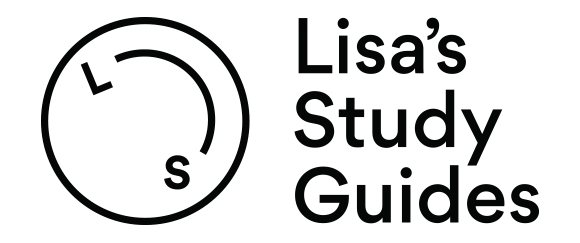For an overview of the Literature Study Design as a whole, be sure to check out our Ultimate Guide to VCE Literature.
What’s Changing?
The largest change is that the Literary Perspectives area of study has been removed and replaced with an area of study called ‘Developing Interpretations’. Literary Perspectives introduced you to literary theories like marxism, feminism and post-structuralism. These might still be relevant if your teacher decides to use them, but for the most part, they have been cut.
Developing Interpretations (Unit 3.2) is about differing opinions of texts. You are being asked to develop an interpretation of your text and to use the evidence available to you to support that understanding of the text. This process is difficult, and TBH is something that teachers, tutors and scholars of literature (and humanities) take for granted. It requires understanding the text, its form, its context, the author, the views and values, the aspects of texts and (if that isn’t enough) to be able to understand how they all connect together, before writing an essay that makes your understanding of all of that stuff coherent.
This new AoS also asks you to take your interpretation and consider it alongside another interpretation, because you get to read a supplementary text! This supplementary text is heavily implied to be a piece of academia. The supplementary reading is supposed to offer an interpretation of the text, and you need to consider how that changes your interpretation. Does it? Was an idea fundamental to your interpretation debunked? Was there something you overlooked? Does the addition of a theoretical framework (like post-colonialism or feminism) impact your understanding?
What Do I Need To Do?
According to the study design, Developing Interpretations involves ‘develop[ing] interpretations of a set text informed by the ideas, views and values of the set text and a supplementary reading’. This means there are two key sections, first is the development of an interpretation, and second is the reconsideration of that initial interpretation. Let’s look at each section in turn:
Developing an Interpretation
2008’s Ironman, directed by John Favreau, is the story of a billionaire weapons dealer who, after a life-altering event, dismantles his weapons-manufacturing business in order to use his genius-level intellect to construct a suit of armour and become a superhero.
Ironman demonstrates the evils of the American war machine whilst showing that moral individuals are capable of redirecting resources and energy into genuine ways of improving people's lives.
Let’s not pretend that Ironman is the pinnacle of modern storytelling. But what we can see in the statement above is an example of an interpretation. We can offer an opposing interpretation that’s a bit more critical:
Ironman demonstrates, falsely, that the altruism of one ‘good guy with a gun’ can compensate for a systemic ravaging of the Middle East by the American colonial war machine.
Both of these interpretations deal with the same text and the same aspects of that text. They both comment on Ironman’s exploration of weapons-dealing, and the protagonist’s response to that issue. The first interpretation is - arguably - the message the screenwriters, Fergus, Ostby, and Marcum intended for us to take away from the story. The second interpretation is considering the efficacy of that take-home message: Is Ironman actually the good guy, or is there a larger systemic issue at play, beyond the morals of one man?
To come up with an interpretation, you must consider views and values, aspects of texts and the context the text was created in. Aspects of texts like genre and characterisation demonstrate how the author views a certain issue or idea, and these issues or ideas are usually aspects of the author’s context. At this stage of developing an interpretation, VCAA wants you to focus on close analysis of the text, so ask questions about how a certain motif might reveal something about the author’s views and values. Or, how does a minor character relate to a historical figure that is contextually relevant to the text? For an excellent example of such an analysis and interpretation, I highly recommend the Coraline Bug Theory by Karsten Runquist (YouTube).
For an in-depth look at how to combine views and values, textual features, and context, check out LSG’s A Killer Literature Study Guide.
The Supplementary Reading
So, you’ve developed a unique and plausible interpretation of your text using the evidence available to you, the context, and the author’s views and values. At this stage, you might have a SAC where you defend your interpretation. No matter how the SAC is done, after developing the interpretation, you will be given a supplementary reading. This can take multiple forms, being a piece written by your teacher, an ‘explication of a literary theory’ or an academic article. The ‘explication of a literary theory’ basically means a work explaining a literary theory, like Marxism, feminism or post-modernism.
After you have read and considered the supplementary reading in class, you will have to see how your initial interpretation holds up, and either adapt or defend your interpretation in light of the new information. If you’re struggling to rethink your ideas, try these steps:
1) Free your mind, dude. Be open to the possibility that you were wrong. Be willing to abandon ideas that you thought were really interesting. They probably were really interesting and different, but unfortunately, they just might not hold up in light of the new piece.
2) Rebut the article. If your ideas are being completely dunked on by the article, can you dunk on the article? Don’t be egregious, but there may be things where you feel that your argument is stronger, why? What has the author missed about a character or event that actually helps to better support your argument?
3) Make room for nuance. You might have an article that mostly agrees with you but helps you to see where you might have been too absolutist. Sure, the text’s views and values are pretty homophobic, and your supplementary reading agrees, but maybe the text is showing that homophobia in a way you hadn’t initially realised.
Pro Tips for Reading Academic Articles
One of the options for the supplementary reading is academic articles (also known as critical readings/articles/essays). These are the kinds of essays that incredibly well-educated and fancy university people with monocles write, and as such, they can be quite difficult to read, especially if they are new to you. Because academia is likely new to you in Years 11 and 12, we want to give you some pro tips for reading and understanding these articles, which will help you all the way into university!
When you’re first given your supplementary reading, it can be really daunting. The most important thing to remember here is to take it slow. You will not understand it immediately, and no one is expecting you to. Here are some cheat codes to be able to understand academic articles faster.
1) Read the Whole Thing
Front to back. Including and especially the abstract, introduction and conclusion. You will not understand a word, but maybe some things will jump out; nice phrases or sentences that kinda feel like something. It might be as simple as a statement like: ‘Mina Harker not only escapes the fate of the other women: she is also largely responsible for the capture and ultimate destruction of Dracula.’ (Senf 1982, p. 34). This statement isn’t Senf’s entire point in the article, but it does help me to interpret Mina’s character in Dracula.
While you’re reading, look up words you don’t understand and write their meaning in the margin. Whilst some might suggest doing this on a second read, it really makes no difference, so you might as well get it out of the way here.
2) Re-read the Introduction and Conclusions
And read them closely. Where is the author commenting on previous peoples’ work, and when are they making their own argument? The introduction usually does a few things:
1) Introduces the text
2) Does a literature review wherein the author looks at previous works of academia and considers their merits
3) Introduces their main argument and their supporting arguments
The conclusion does what your conclusions should be doing! It restates the core arguments and supporting arguments, connecting them in a way that leads to a clear interpretation.
Reading the intro and conclusion helps you understand the whole piece because it’s the same arguments without all the extraneous wordiness and verboseness of the actual body paragraphs. It lacks some nuance and the logic behind the arguments, but it signposts what the author is actually saying.
3) Try to Summarise the Author’s Interpretation
After reading the article a couple of times and focusing heavily on the intro and conclusion, discuss with your classmates what they got from the piece. Try to state or write down the core argument of the author and the ways they defend that contention. This is a practice that you will do all the way to university, so it’s worth getting some practice in! Most articles use the same structure you do at school, which is an introduction, three arguments and a conclusion. It’s just that those three arguments are a lot more complex and long-winded. If you’re lucky, the author has used subheadings to separate the arguments.
4) Read More Academic Articles
This is a little bit of a cheat, and definitely more effort, but trust me: it pays off. The best Literature students are well-read. Reading fiction (especially the classics) allows you to see how your text fits into the wider literary world. Things like genres, literary movements, historical ideas and pop culture references can only be gleaned from a text if you have the knowledge of other texts: It’s really hard to watch the later Avengers movies without having seen Ironman! Same goes for Literature. Academic authors do the same thing - How does Dracula compare to Edgar Allen Poe? How does Alias Grace fit into a wider feminist discourse in the late 90s?
Reading more academic articles gives you a way to practice engaging with academia and to repeatedly expose yourself to the language, forms and ways of thinking that are common in academics. If the best Literature students read loads of fiction, imagine what reading loads of university-level academia could do!
The SAC
The SAC for Developing Interpretations is a little bit weird. It’s worth 50% of Unit 3, but is split into two parts:
- Part A: An initial interpretation of the text’s views and values within its historical, social and cultural context.
- Part B: A written response that compares/interweaves and analyses an initial interpretation with a subsequent interpretation, using a key moment from the text.
Your teacher might do the two parts together, or separately. In any case, Part B will include the use of a passage from the set text that you must engage with. How does the passage help you to interpret the text, and how does that interpretation agree or disagree with the interpretation presented in the supplementary reading? Here are some of the possible ways that your teacher may decide to design the SAC:
1) Part A and Part B are assessed in separate tasks
Part A is assessed after sustained study of the set text. Students are invited to explore a key idea or value in the text and consider how the text has presented and represented that concern or value. They could, for example, explore the ways a text has presented and represented isolation or power or marriage.
Part B is assessed after students consider the supplementary reading. Students revisit the key concern or value through a passage from the set text and provide an enhanced interpretation informed by the supplementary reading.
2) Part A and Part B are assessed as one task
Students are provided with a passage from the set text and a specific question that relates to one of the text’s key ideas. Students engage with a close reading of the passage based on the key idea, offering an interpretation drawn from the language of the text and from the views and values of the text. They then build on that initial interpretation by engaging with the ideas and/or position they have considered through the supplementary reading.
The most difficult part of the SAC for this new AoS is balancing your interpretation, the textual evidence and the alternative interpretation of the supplementary reading. It is vital that if you are doing Literature this year, that you know your 3.2 text like the back of your hand, and that you practice writing loads and loads. It is also worth trying to make your interpretation incredibly specific so that you can go in-depth into one idea, rather than simply skimming over 3 or 4 big ideas.
Check out our Developing Interpretations SAC Guide: Interpreting Alias Grace blog post for more. Even if you're not studying Alias Grace, this blog post will further clarify what to expect from the Developing Interpretation SAC.
Going Forward
I highly recommend that you begin engaging in interpretative and analytical exercises that you can apply to your everyday life. As a Literature student, there is an assumption that you’re interested in Literature (obviously!), film and visual media, history, current affairs and even visual arts. In the wonderful age of the internet there are unlimited free resources that can support your engagement with these fields in interesting ways. I like to say to my Llit students that analysis should be something you can’t turn off - you should be watching TV and disassembling the ways in which Love Island manufactures drama and keeps you engaged. Why does this advertisement make me want to eat KFC? How has this author made me cry after this character’s death? To develop strong interpretations of literature, you need to be cognizant of the history, construction and theories of literature, and so engaging with as many texts as possible supports your ability to recognise things like genre, historical literary and artistic movements and emotionally manipulative language.
These resources should help you see how skilled literary and media critics analyse fictional worlds.
Literature
Death of the Author by Lindsay Ellis (YouTube). Discusses authorial intent and whether we can view ‘the art without the artist’. Ellis also has fantastic interpretations of film and TV.
Nerdwriter (YouTube). Likely one of the best examples of closely analysing text. Check out his video on Shakespeare’s Sonnet 116, and on how Donald Trump and Bernie Sanders answer questions.
literarydevices.net. Literally my favourite website. A database of every imaginable literary device, how they function, and popular examples. Invaluable for the lit student.
Databases. Go to your school library and ask your librarian what Arts and Humanities databases your school has access to. JSTOR, ProQuest and AusLit, are all databases that host the kinds of articles you should be exposing yourself to. If you are tutoring with Lisa’s Study Guides, then your tutor may be able to help you gather resources from some databases.
Film and Television
Pop Culture Detective (YouTube) especially his videos on the Marvel Universe and the status quo, and misogyny in the Big Bang Theory (CW: discusses sexual assault).
Super Position by David Grueber (Article). Referenced in Pop Culture Detective’s MCU episode and interprets the narrative form of the superhero genre.
The Coraline Bug Theory by Karsten Runquist (YouTube). An excellent example of developing an interpretation of a text and using a minor textual element to explore that interpretation.
CineFix (YouTube) especially their “What’s the Difference” and “Top 10” series. Although presenting film ‘for the masses’, their Top 10 lists constantly consider how an idea (like family or cars) contribute to the messaging of the film.





%20(2).webp)

.jpg)